Why Circle Oahu? The Magic of an Island Loop
Circling Oahu offers an unmatched way to experience the island’s legendary diversity. From the lush windward cliffs to the bustling surf towns and tranquil hidden coves, a full loop around Oahu grants us a panoramic sense of place. The blend of ocean breezes, mountain silhouettes, and vibrant local culture creates an atmosphere that lingers in memory long after the journey ends.

This route isn’t just about sightseeing—it’s about feeling the rhythm of Hawaiian life, sampling roadside flavors, and witnessing natural wonders unfold around every bend. A Circle Oahu tour condenses the island’s most sought-after attractions and secret corners into a single, unforgettable adventure.
What is the Circle Island Tour of Oahu?
The Circle Island Tour of Oahu is a comprehensive sightseeing journey that loops the main roads around the island, connecting Honolulu and Waikiki with world-renowned beaches, historic sites, and awe-inspiring lookouts. Most tours follow a counterclockwise route, beginning in the south and traversing the dramatic eastern coastline before reaching the famous North Shore and returning through central Oahu.
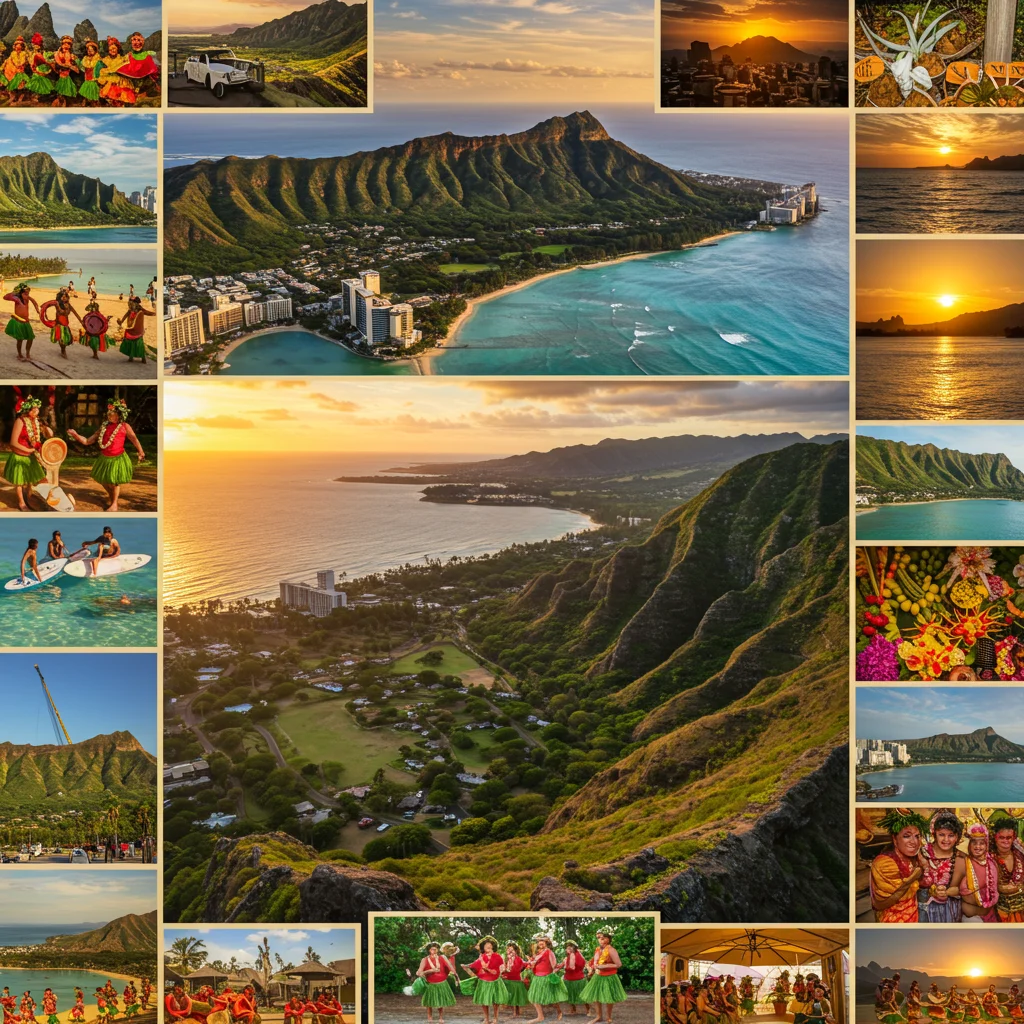
Along the way, travelers can expect stops at iconic landmarks, local eateries, and scenic viewpoints that highlight Oahu’s rich history and natural beauty. Whether driving independently or joining a guided excursion, the Circle Island route brings Hawaii’s stories to life at every turn.
Who Should Take a Circle Oahu Tour?
A Circle Oahu tour appeals to a wide range of visitors. First-time travelers seeking a comprehensive introduction to the island will find it especially rewarding. Families, couples, solo adventurers, and even repeat visitors can all benefit from the tour’s efficient overview of Oahu’s top destinations.
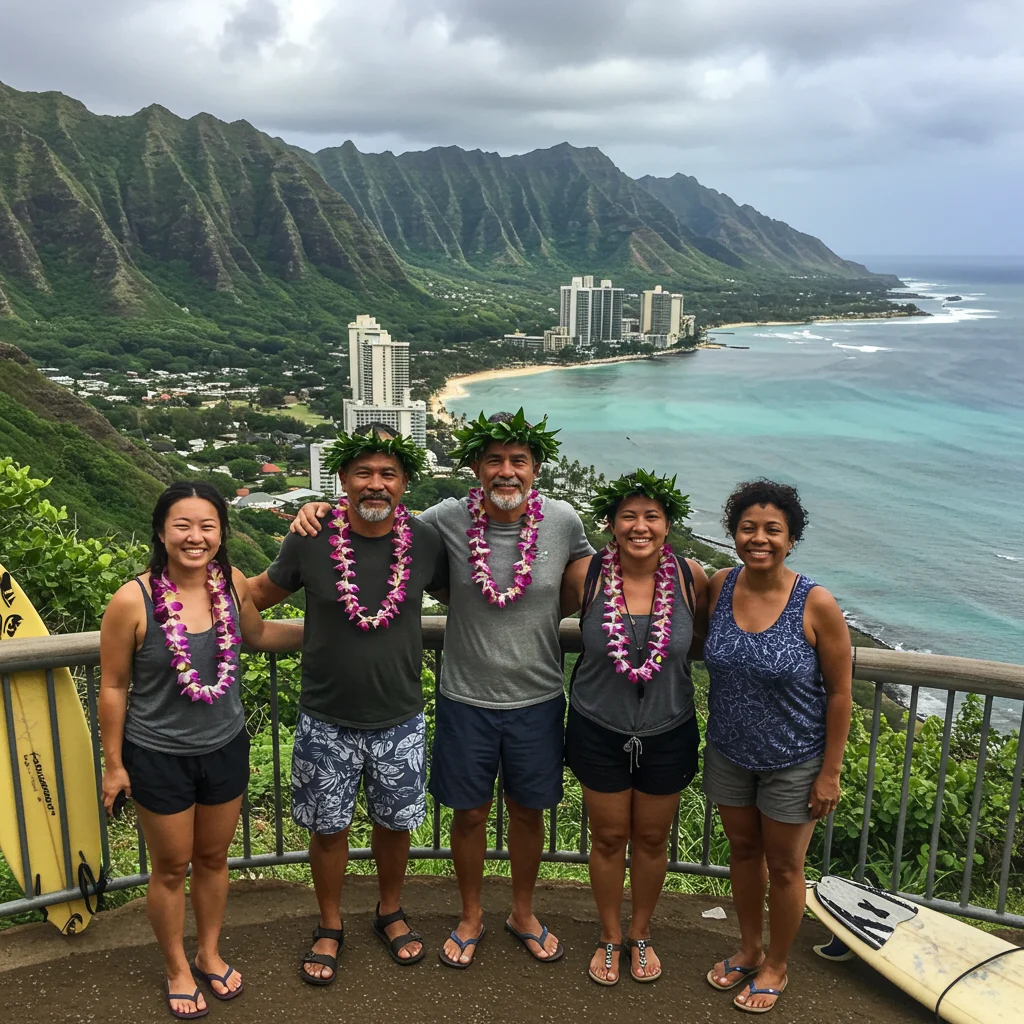
Those with limited time, as well as anyone wanting to maximize their experience without the stress of planning multiple day trips, will appreciate the streamlined nature of this loop. It’s also an excellent choice for photography enthusiasts, foodies, and history buffs eager to sample everything Oahu has to offer in one day.
How Long Does a Circle Island Tour Take?
The typical Circle Island Tour spans between seven and ten hours, depending on the number and length of stops. Guided tours often last a full day, starting in the morning and finishing by early evening. Self-guided travelers may choose to linger longer at favorite spots or divide the loop into two shorter days.
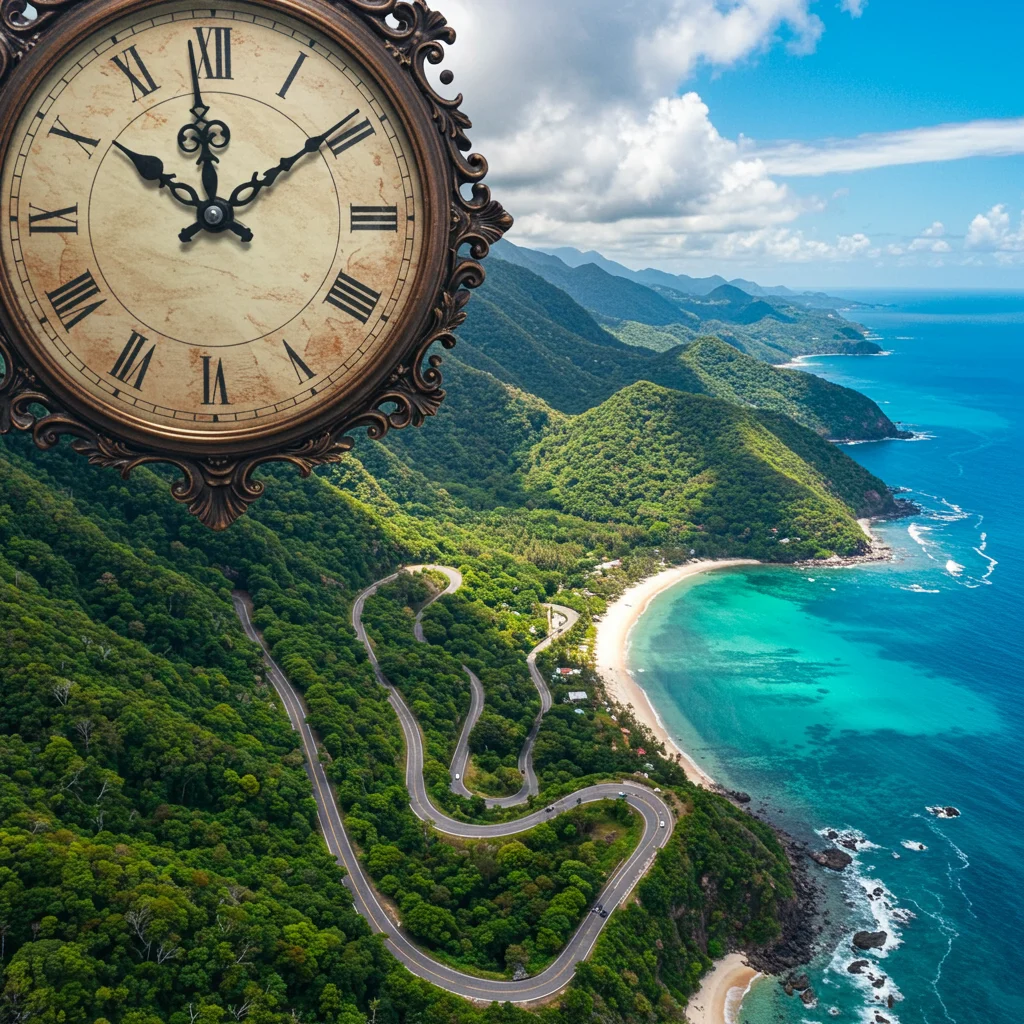
Factoring in traffic, especially through Honolulu and popular North Shore towns, is important when planning the journey. Some prefer an early morning departure to make the most of each destination and avoid peak crowds.
Best Time of Year to Circle Oahu
While Oahu is a year-round destination, the best periods for a Circle Island tour are spring (April–June) and fall (September–November). During these months, the weather is typically pleasant and the island is less crowded. Summer brings vibrant energy and big surf on the North Shore, but also more visitors and occasional heat.
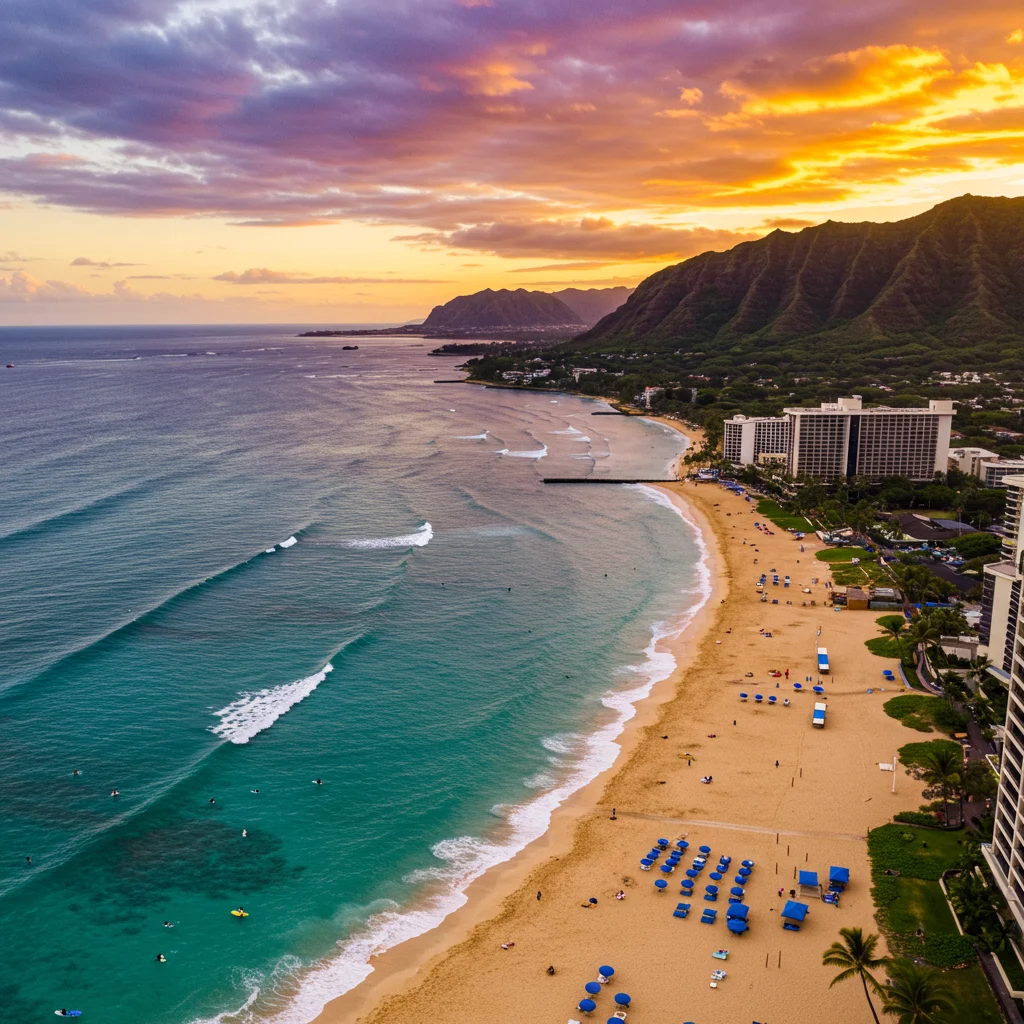
Winter months are famous for massive waves and surfing competitions, especially along the North Shore, but rain showers are more frequent. Always check the forecast and local event calendars to optimize your experience.
Map of the Circle Oahu Route
A Circle Oahu map is invaluable for visualizing the journey. The classic loop begins in Honolulu, follows the Kalanianaole Highway along the southeastern coast, continues up the windward side via Kamehameha Highway, and loops through the North Shore before cutting back through central Oahu on H-2 or Kamehameha Highway.
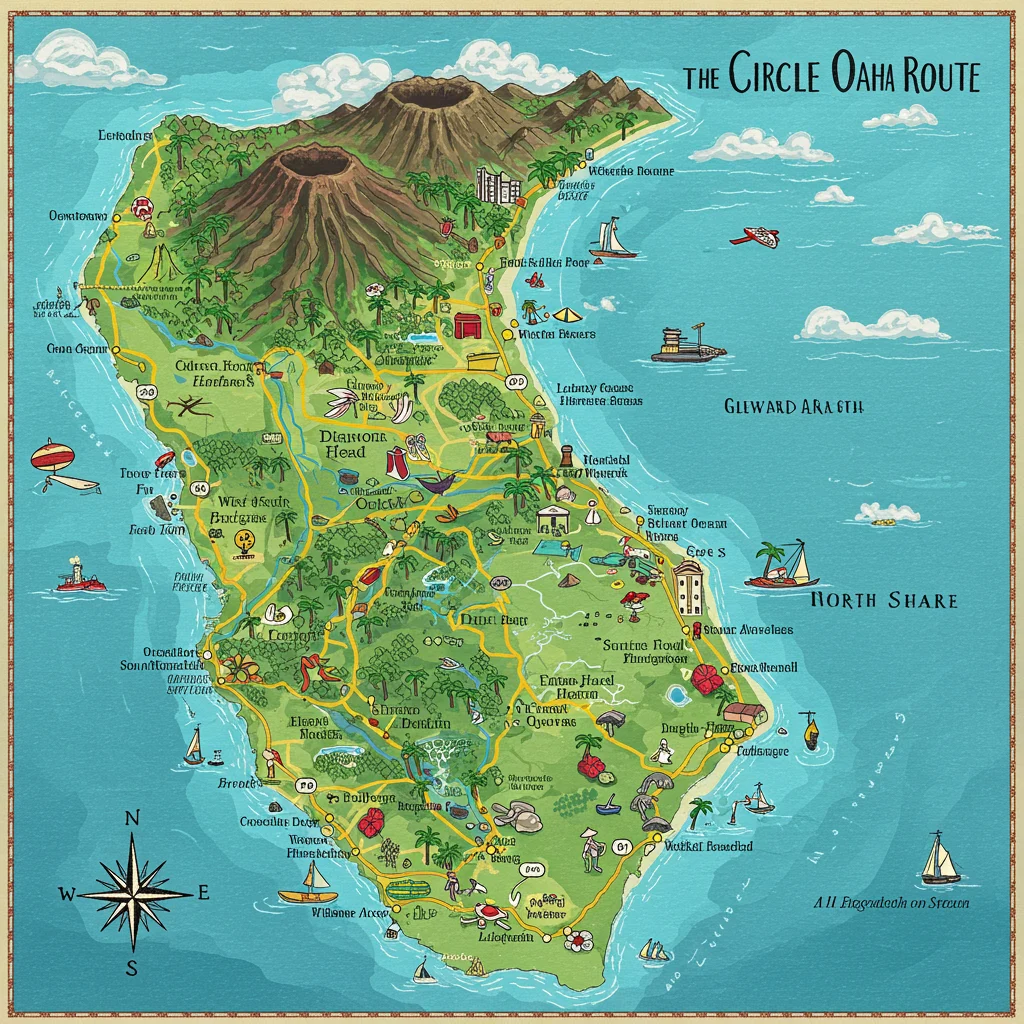
Many tour operators provide printed or digital maps highlighting major stops, scenic detours, and amenities. For those considering aerial perspectives, our article on helicopter views of Oahu offers additional inspiration for planning your route.
Overview: Major Stops on a Circle Oahu Tour
Oahu’s circle route features a mosaic of must-see attractions. From volcanic lookouts and serene temples to bustling surf towns and lush valleys, each stop reveals a new layer of the island’s character.
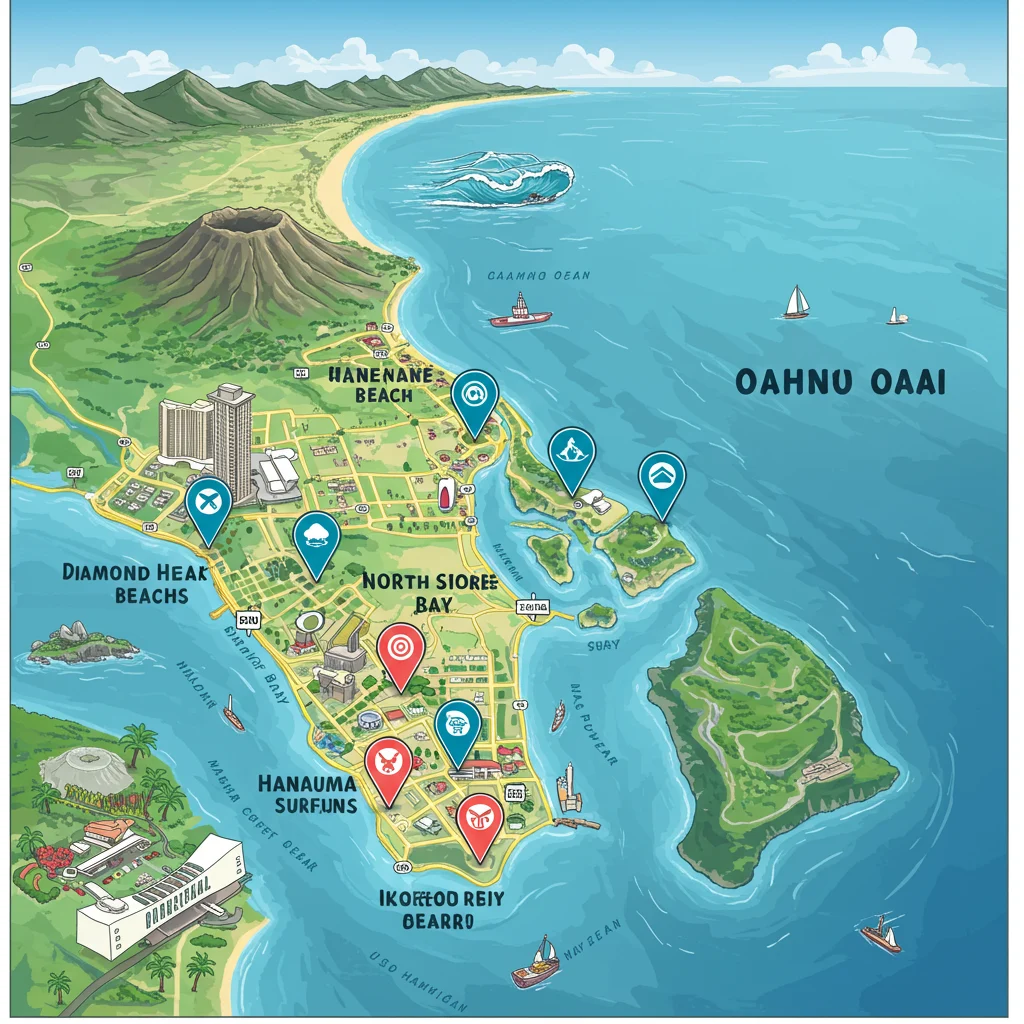
- Honolulu & Waikiki
- Diamond Head Lookout
- Hanauma Bay
- Halona Blowhole & Eternity Beach
- Waimanalo and Kailua
- Byodo-In Temple
- Kualoa Ranch & Chinaman’s Hat
- North Shore beaches and Haleiwa
- Waimea Valley & Waimea Falls
- Dole Plantation
- Pearl Harbor (optional)
Let’s break down each highlight for an in-depth look at what awaits.
Starting Point: Honolulu & Waikiki
Our journey begins in the heart of Honolulu, where the city’s vibrant energy meets the iconic crescent of Waikiki Beach. Early morning light bathes the shoreline in gold, surfers carve gentle waves, and the distant silhouette of Diamond Head beckons. This bustling area is the perfect launchpad for a day of island adventure.
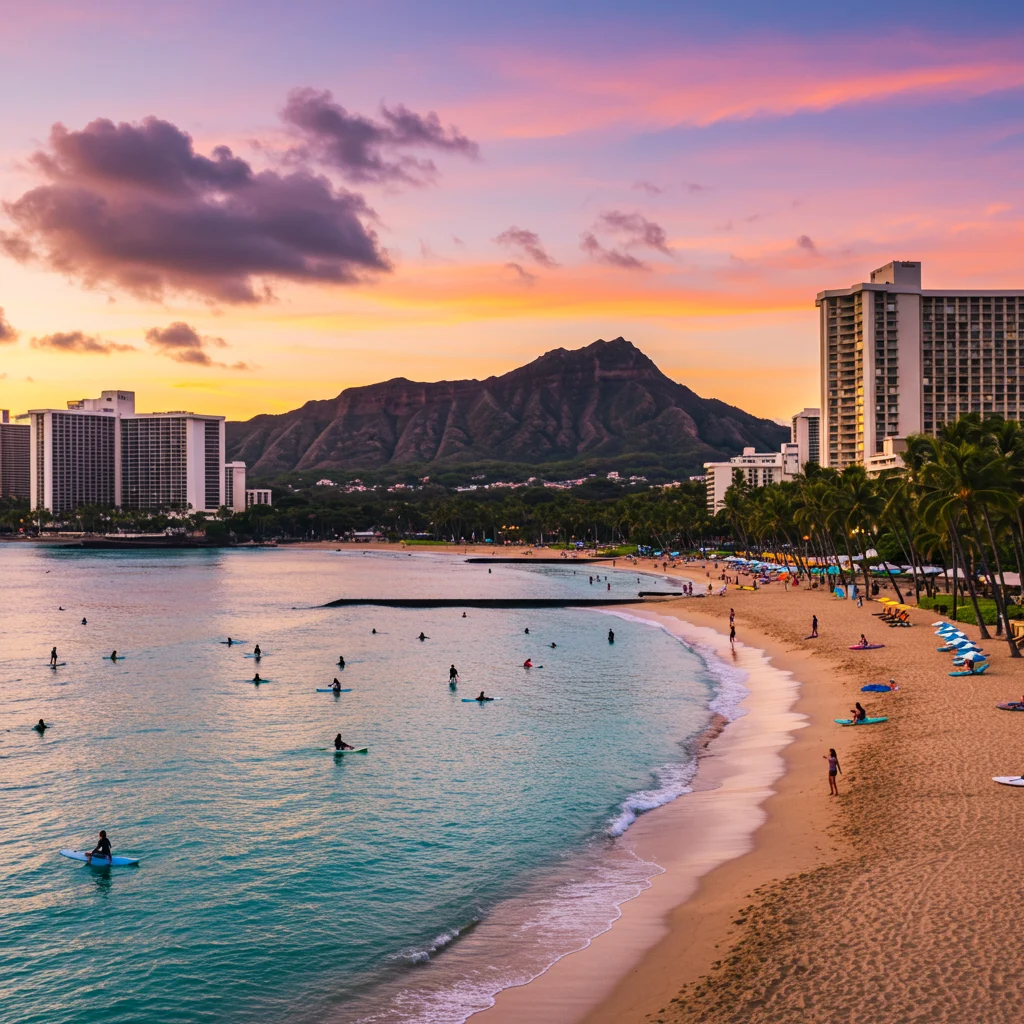
Must-See: Diamond Head Lookout
Diamond Head, or Leahi, is one of Oahu’s most recognizable landmarks. The lookout offers panoramic views over Waikiki, the city skyline, and the sparkling Pacific. The crisp morning air here is invigorating, and the walk to the summit rewards us with a sweeping perspective that sets the tone for the day.
Kahala & East Oahu Highlights
Driving eastward, the neighborhoods of Kahala showcase elegant homes and lush gardens. This area transitions quickly into wild, volcanic coastlines, where dramatic cliffs and azure waves create a stunning contrast.
Hanauma Bay: Snorkeling Paradise
Hanauma Bay is a protected marine life conservation area renowned for its vibrant coral reefs and abundant tropical fish. The clear, calm waters invite both novice and experienced snorkelers. Early arrival is crucial, as daily visitor numbers are limited to preserve the bay’s delicate ecosystem.
Halona Blowhole & Eternity Beach
The Halona Blowhole is a natural lava tube that shoots plumes of seawater high into the air, creating a mesmerizing spectacle. Just below, the secluded Eternity Beach offers a tranquil spot to pause and listen to the rhythmic crash of waves against volcanic rock.
What to See at Sandy Beach Park?
Sandy Beach Park is beloved by locals for its powerful shore breaks and golden sands. The sound of pounding surf is ever-present, and skilled bodyboarders can often be seen challenging the waves. Swimming here requires caution due to strong currents, but the atmosphere is electric with energy and excitement.
Makapu’u Point and Lighthouse
The Makapu’u Point Lighthouse Trail offers a gentle uphill walk with breathtaking views of Oahu’s southeastern coastline. On clear days, the horizon stretches to neighboring islands. In winter, this is a prime spot for whale watching as humpbacks breach offshore.
Waimanalo Beach: Hidden Gem
Waimanalo Beach boasts powdery white sand and brilliant turquoise waters, often with far fewer crowds than other island beaches. The Ko’olau Mountains rise dramatically in the background, lending a sense of peace and seclusion that’s rare so close to Honolulu.
Exploring Kailua Town
Kailua is a charming town known for its laid-back vibe, boutique shops, and excellent cafes. It’s an ideal place to pause for breakfast or coffee, sample local pastries, and chat with friendly residents.
Lanikai Beach: Is It Worth the Stop?
Frequently ranked among the world’s best beaches, Lanikai Beach dazzles with soft sand, gentle surf, and views of the Mokulua Islands. Early morning or late afternoon visits are most peaceful, as parking is limited and the beach is a favorite among locals for sunrise paddles.
Nu‘uanu Pali Lookout: Scenic Views
The Nu‘uanu Pali Lookout delivers dramatic, wind-swept vistas of Oahu’s lush windward coast. The history here is palpable, as this was the site of a pivotal battle in Hawaiian history. The strong breezes and misty air create a refreshing stop on the journey.
Byodo-In Temple: A Touch of Japan in Oahu
Nestled in the Valley of the Temples, the Byodo-In Temple is a serene replica of its Kyoto namesake. Surrounded by koi ponds and tranquil gardens, the temple offers a moment of reflection and calm amid the day’s adventures.
Kualoa Ranch: Adventure & Movie Locations
Kualoa Ranch is famous for its lush landscapes and thrilling outdoor activities. Visitors can explore movie filming sites, take ATV tours, or enjoy horseback rides through verdant valleys. The scenery here is instantly recognizable from blockbuster films and television shows.
Chinaman’s Hat (Mokoli’i Island)
Chinaman’s Hat, or Mokoli’i Island, rises from the sea just offshore, creating a striking silhouette against the sky. This spot is perfect for photos, picnics, or even a kayak excursion for those seeking a unique perspective on the coastline.
Laie Point State Wayside
Laie Point is a rugged promontory offering panoramic ocean views and dramatic rock formations. The crashing surf and salty air here evoke a sense of wild beauty, making it a favorite stop for photographers and nature lovers alike.
North Shore Gateway: Kahuku & Shrimp Trucks
Arriving in Kahuku signals the gateway to Oahu’s legendary North Shore. This area is renowned for its roadside shrimp trucks, lush farmland, and a slower pace of life that contrasts with the energy of Honolulu.
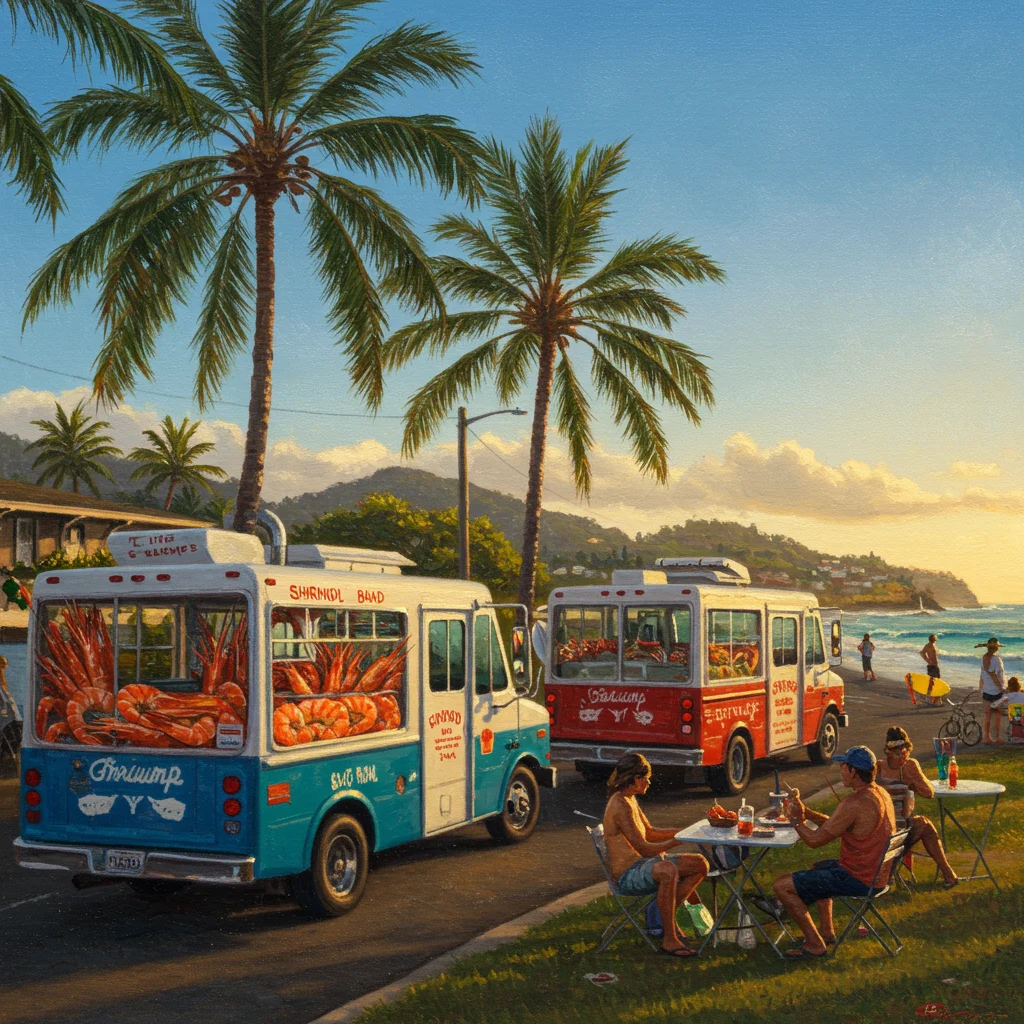
Best Shrimp Trucks to Try
The aroma of garlic butter and sizzling shrimp fills the air as we approach the famous shrimp trucks of Kahuku. Favorites include Giovanni’s, Fumi’s, and Romy’s, each serving up generous plates of fresh, locally sourced shrimp. These open-air eateries capture the essence of North Shore dining.
Kahuku Farms & Local Produce
Kahuku Farms invites visitors to sample smoothies, fresh fruit, and farm-to-table dishes in a rustic setting. The flavors here reflect the richness of Oahu’s volcanic soil and the ingenuity of local growers.
Historic Haleiwa Town
Haleiwa is the cultural heart of the North Shore. Its colorful wooden buildings, surf shops, and art galleries evoke a nostalgic charm. The town’s laid-back vibe makes it an inviting place to stroll, shop, and soak up the essence of old Hawaii.
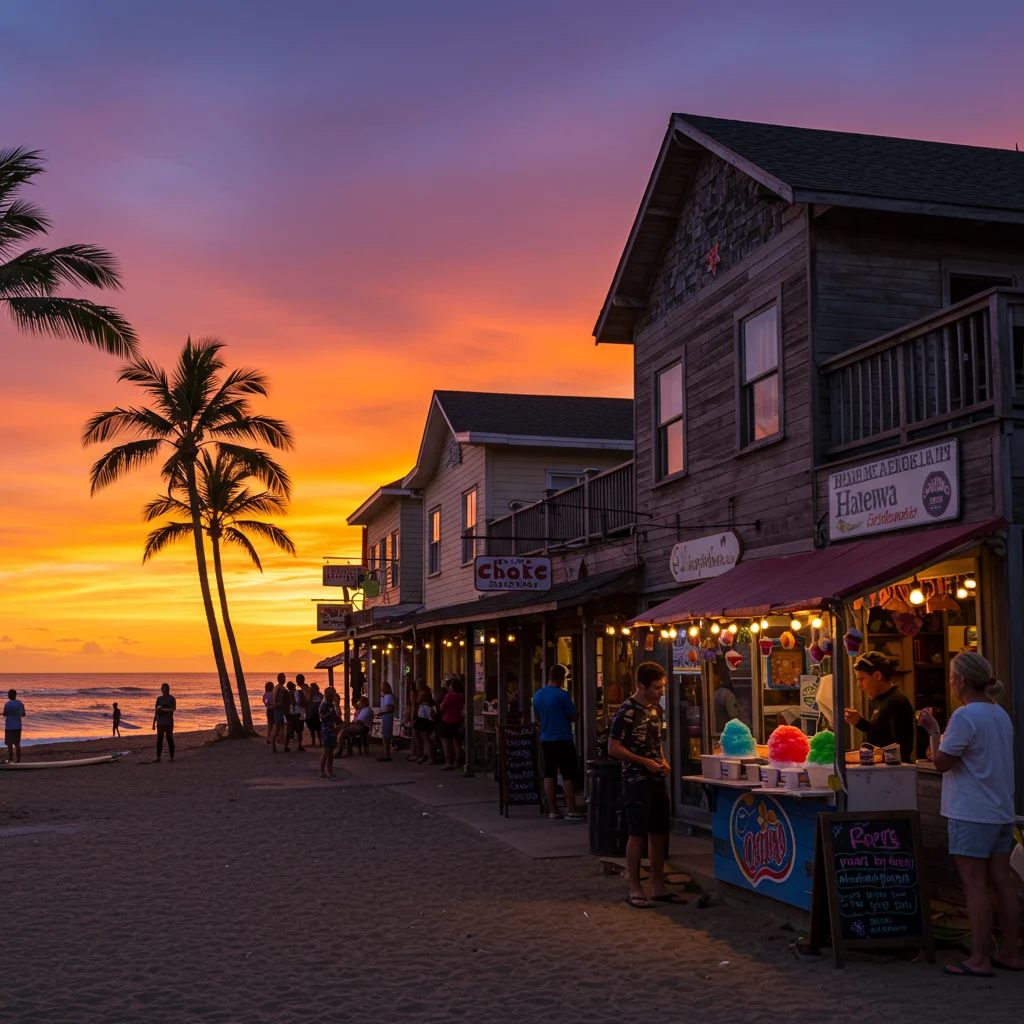
What to Do in Haleiwa?
Walking through Haleiwa’s main street, we encounter eclectic boutiques, surfboard rentals, and local art galleries. For those interested in history, the Haleiwa Train Bridge and nearby historic sites offer a glimpse into the town’s past.
Best Places to Eat in Haleiwa
Culinary highlights in Haleiwa include renowned food trucks, gourmet burgers at Kua ‘Aina, and fresh poke bowls. The town’s eateries emphasize local ingredients and inventive flavors, perfect for refueling mid-tour.
Shave Ice: A North Shore Must-Try
No visit to Haleiwa is complete without sampling shave ice. Matsumoto’s and Aoki’s are iconic shops where fluffy, ice-cold treats are drizzled with tropical syrups and topped with sweetened condensed milk or azuki beans. The sensation is an instant, refreshing escape from the midday sun.
Waimea Bay: Surfing & Swimming
Waimea Bay is legendary for its towering winter surf and tranquil summer swimming. The bay’s crescent beach, framed by rugged cliffs and swaying palms, is a postcard-perfect stop along the North Shore.
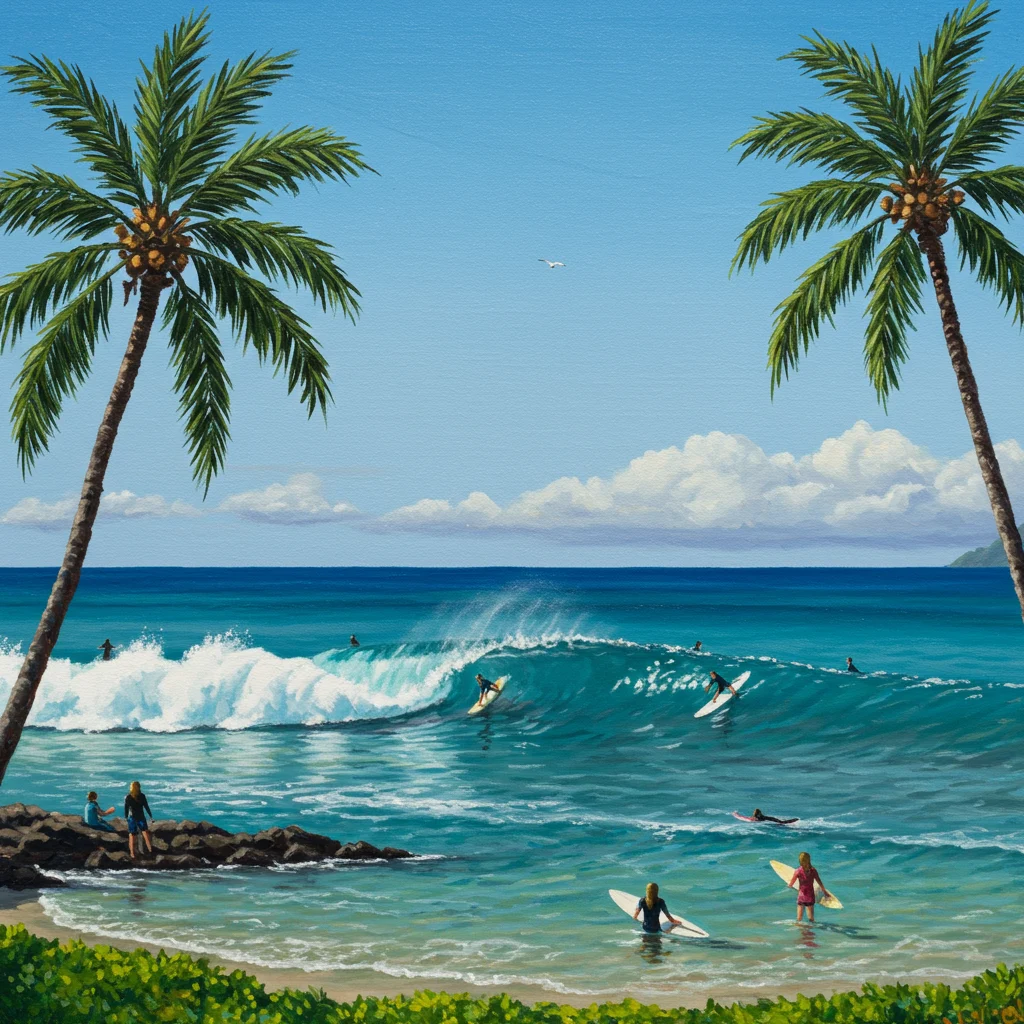
What Makes Waimea Bay Special?
In winter, waves at Waimea Bay can reach heights of 30 feet, drawing elite surfers from around the world. During the calmer summer months, the bay transforms into a peaceful swimming and snorkeling haven, with crystal-clear waters and abundant marine life.
Best Time to Visit Waimea Bay
Timing is everything at Waimea Bay. For surf enthusiasts, the peak season runs from November through February. Swimmers and families may prefer May through September when the surf subsides and the water is invitingly calm.
Waimea Valley & Waimea Falls: Complete Guide
Waimea Valley is a lush botanical paradise steeped in Hawaiian history and culture. The valley’s centerpiece, Waimea Falls, is a gentle cascade surrounded by tropical gardens, ancient archaeological sites, and opportunities for cultural immersion.
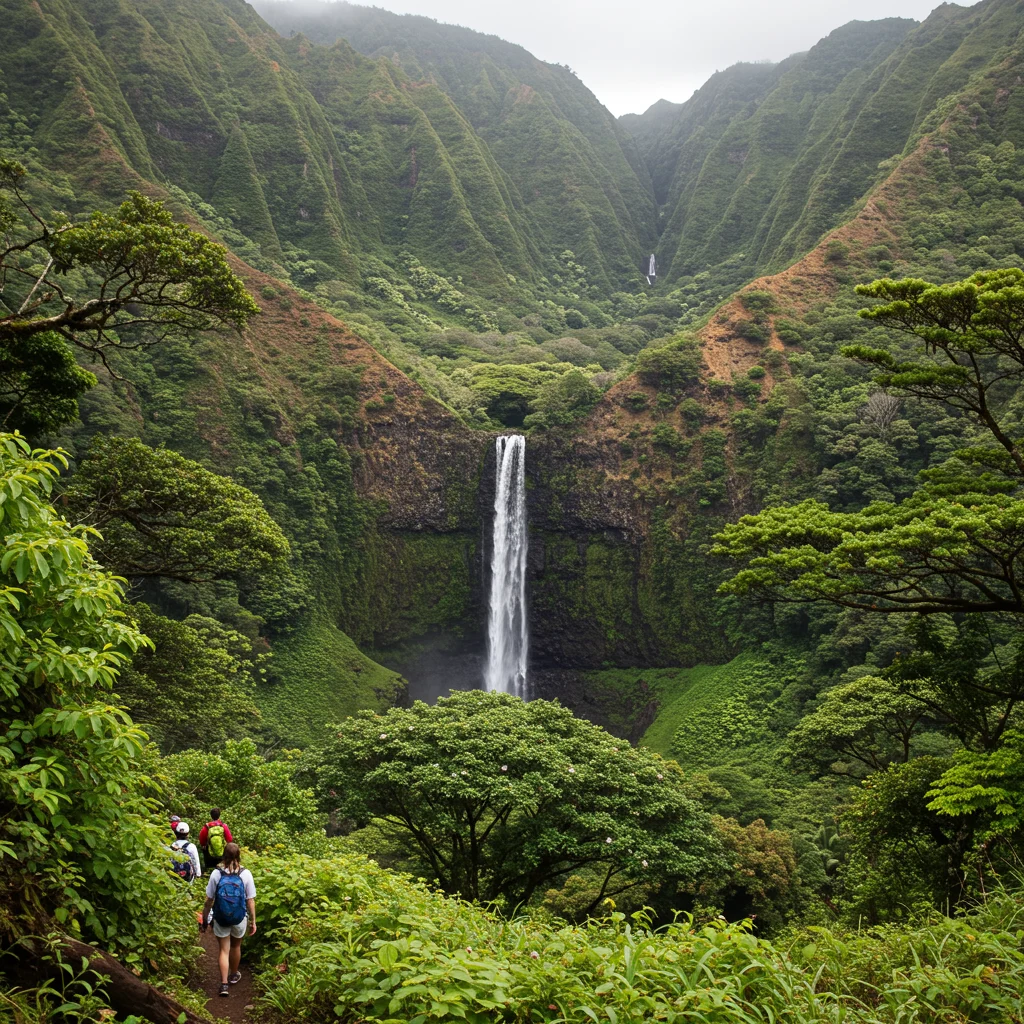
History of Waimea Valley
Waimea Valley has been a sacred place for centuries, once home to Hawaiian royalty and spiritual leaders. The valley’s rich soils and abundant water supported thriving communities, and many historic sites remain preserved for visitors to appreciate.
Waimea Falls: What to Expect
The main attraction is the 45-foot Waimea Falls, which tumbles into a natural swimming pool. The sound of rushing water, the scent of plumeria, and the vibrant foliage create a sensory feast for all who visit.
How to Hike to Waimea Falls?
The hike to Waimea Falls is an easy, paved path just under a mile each way. Along the route, interpretive signs highlight native plants and historical features. Shady trees and the gentle murmur of streams make the walk pleasant for all ages.
Swimming at Waimea Falls: Is It Safe?
Swimming is permitted in the pool at the base of Waimea Falls when conditions allow. Lifeguards are typically on duty, and life jackets are provided. Water quality is monitored, but after heavy rains, swimming may be temporarily suspended for safety.
Waimea Valley Botanical Gardens
The botanical gardens in Waimea Valley feature over 5,000 species of tropical plants. Colorful orchids, towering palms, and rare Hawaiian flora line the pathways, creating a living museum of the islands’ biodiversity.
Cultural Activities in Waimea Valley
Visitors can participate in traditional Hawaiian crafts, watch hula performances, or learn about the valley’s spiritual heritage from knowledgeable guides. These experiences enrich our understanding of Hawaii’s living culture.
Waimea Valley Admission & Hours
Waimea Valley is open daily, with admission fees supporting conservation efforts. Hours may vary seasonally, so it’s wise to check in advance. Discounts are often available for children, seniors, and kama‘aina (local residents).
Tips for Visiting Waimea Falls with Kids
Families will find Waimea Valley especially accommodating. The paved trail is stroller-friendly, and interpretive exhibits engage young minds. Bringing water shoes, sunscreen, and snacks ensures a comfortable visit for all ages.
Nearby Attractions to Waimea Valley
After visiting Waimea Valley, consider stopping at nearby Shark’s Cove for snorkeling or exploring the charming shops and eateries of Haleiwa. For those inspired by volcanic landscapes, our coverage of Hilo from Oahu volcano excursions provides ideas for extending your Hawaiian adventure to the Big Island.
North Shore Beaches: Sunset, Pipeline, & More
The North Shore is synonymous with world-class surf and pristine beaches. Each stretch of sand has its own personality, from the thunderous waves of Pipeline to the tranquil tide pools of Shark’s Cove.
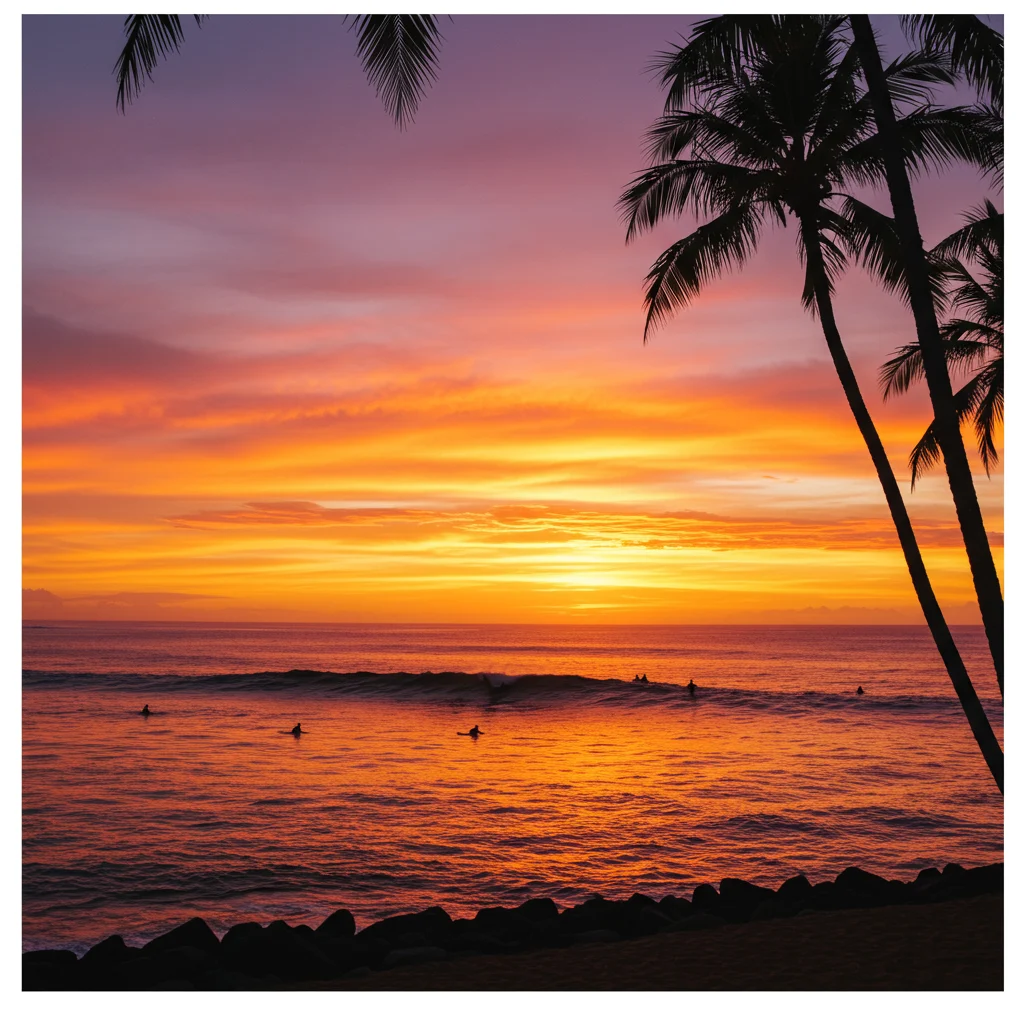
Banzai Pipeline: Surf Mecca
Banzai Pipeline is revered among surfers for its perfect barrels and powerful winter swells. Crowds gather on the beach to watch daring athletes ride waves that thunder just yards from shore, creating an exhilarating spectacle.
Sunset Beach: Best Sunset Views?
As the day draws to a close, Sunset Beach lives up to its name. Here, the sky ignites in shades of orange and purple, and the warm breeze carries the scent of salt and plumeria. The atmosphere is both peaceful and awe-inspiring.
Shark’s Cove: Snorkeling Spot
Shark’s Cove is a beloved snorkeling spot featuring clear, shallow pools teeming with colorful fish. The rocky terrain and gentle surf make it ideal for families and novice snorkelers. Summer months offer the best conditions for underwater exploration.
Turtle Beach (Laniakea): Spotting Sea Turtles
Laniakea Beach, affectionately known as Turtle Beach, is famous for its resident Hawaiian green sea turtles. Volunteers are often present to educate visitors and ensure the turtles are respected and protected. Watching these gentle giants bask on the sand is a highlight for many.
Exploring the Dole Plantation
Heading inland, the Dole Plantation offers a playful and educational stop. The plantation is surrounded by rolling fields of pineapple, and the sweet scent of ripe fruit fills the air.
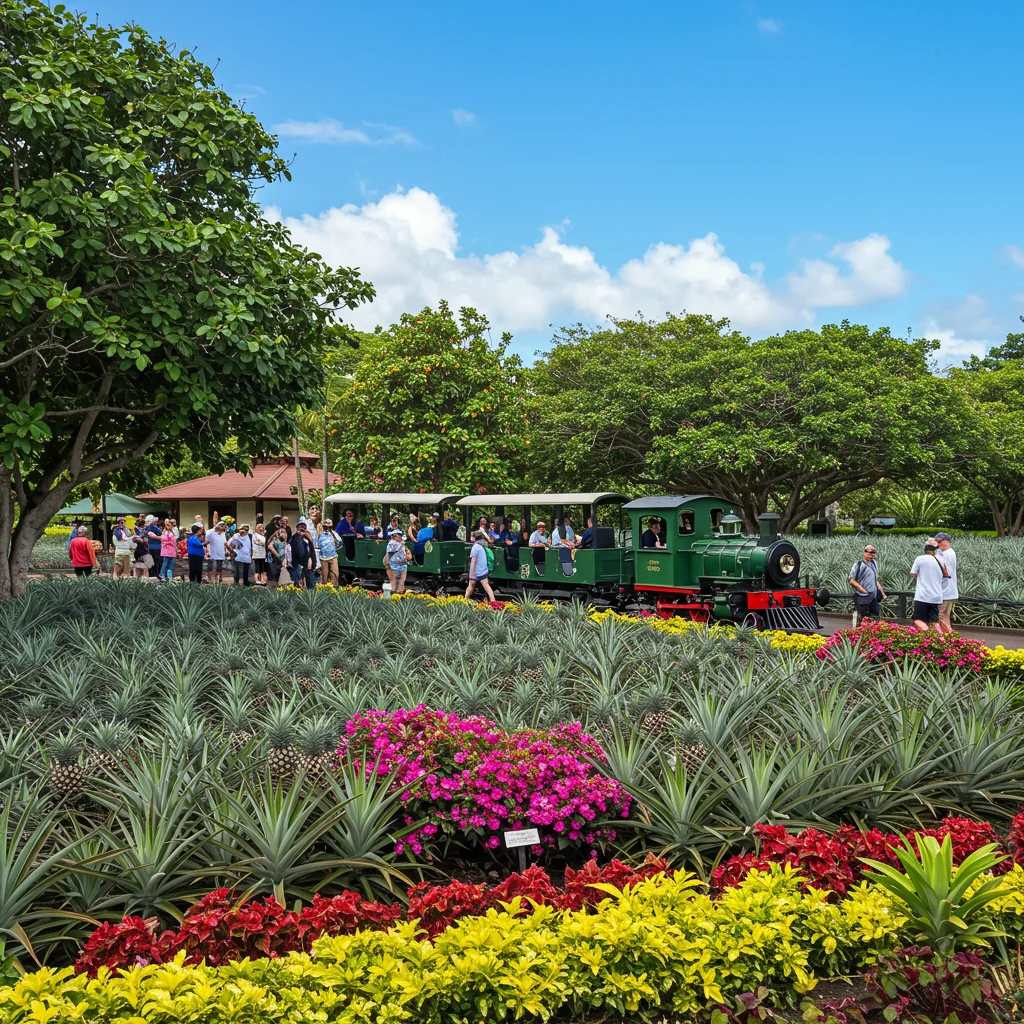
What to Do at Dole Plantation?
Visitors can wander through the world’s largest pineapple maze, learn about pineapple cultivation, and shop for unique souvenirs. The plantation’s family-friendly atmosphere makes it a popular stop for groups of all ages.
Pineapple Express Train Tour
The Pineapple Express train meanders through the plantation, offering narrated tours of the crops and history. The gentle ride, the sound of the whistle, and the sight of endless green rows create a nostalgic, lighthearted experience.
Dole Whip: Iconic Treat
No trip to the Dole Plantation is complete without savoring a creamy, refreshing Dole Whip. This pineapple soft-serve treat is legendary among visitors for its sweet, tropical flavor and satisfying chill.
Return to Honolulu: Final Leg of the Circle
The last stretch of the Circle Oahu tour leads back toward Honolulu, passing through lush central valleys and offering opportunities for shopping and reflection on the day’s experiences.
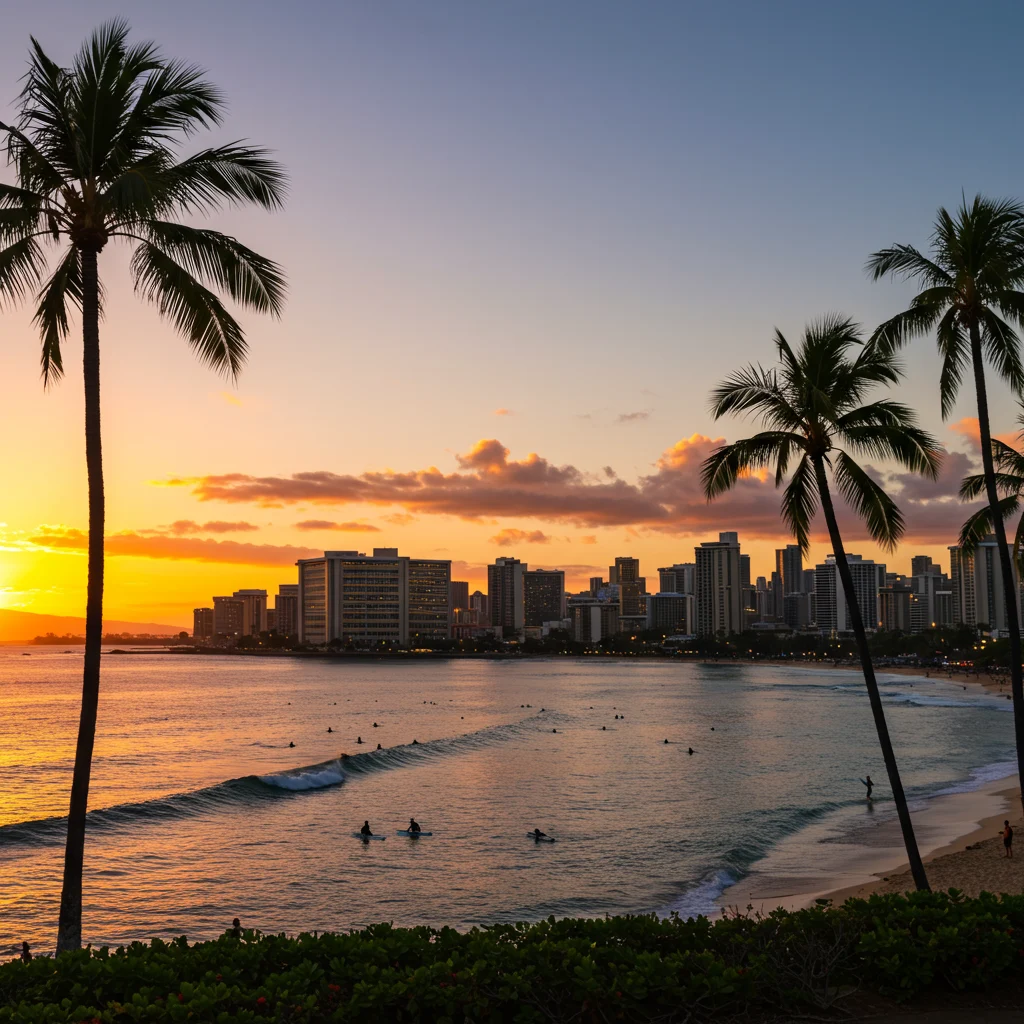
Waikele Premium Outlets: Shopping Stop
Waikele Premium Outlets is the island’s premier outlet shopping destination. Visitors can browse a wide selection of designer brands and local goods, making it an excellent place to find gifts or souvenirs before concluding the loop.
Pearl Harbor: Should You Add It to Your Tour?
Pearl Harbor is a site of profound historical significance. Those interested in learning more about the events of December 7, 1941, and the memorials that honor those lost, may wish to add a stop here. Our post on visiting Pearl Harbor provides practical tips for making the most of your visit.
Tips for Planning Your Circle Oahu Tour
Thoughtful planning elevates the Circle Oahu experience from memorable to extraordinary. Timing, transportation, and personal preferences all contribute to crafting the perfect day.
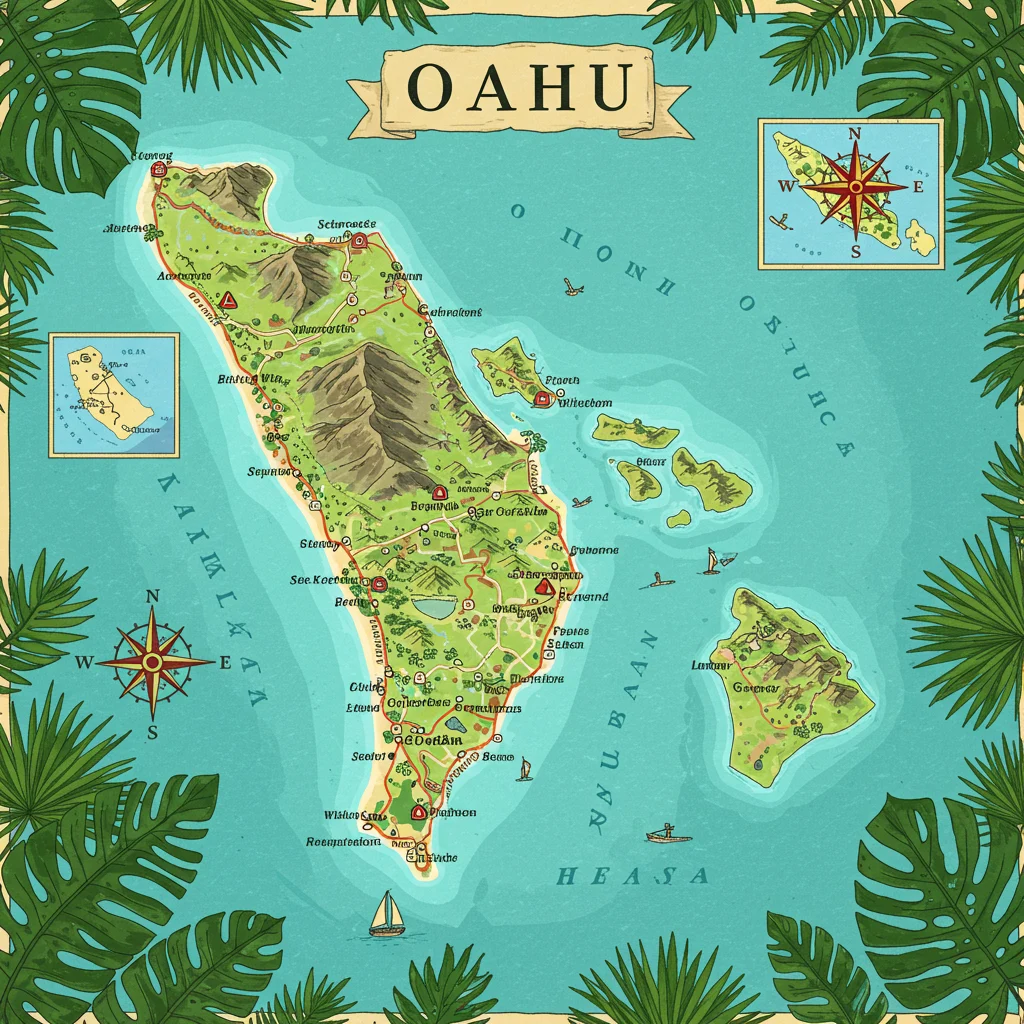
Should You Drive Yourself or Book a Guided Tour?
Self-driving offers flexibility and spontaneity, while guided tours provide local expertise and stress-free logistics. Those seeking in-depth cultural and historical context may prefer a guided option. For travelers eager to book activities or find tours, Viator is a trusted resource for comparing options.
How to Choose the Best Circle Island Tour Operator?
When selecting a tour operator, consider group size, included attractions, and reviews from past guests. Some tours emphasize adventure, while others focus on history, food, or family-friendly experiences. Prioritize safety, knowledgeable guides, and clear itineraries.
Packing Essentials for a Circle Oahu Day
- Comfortable walking shoes
- Swimwear and towel
- Sunscreen and hat
- Refillable water bottle
- Camera or smartphone
- Light rain jacket
- Snacks or picnic lunch
Preparation ensures you can fully enjoy every stop, regardless of weather or activity.
Budgeting for Your Circle Oahu Adventure
Costs vary depending on transportation, entrance fees, meals, and souvenirs. Guided tours typically range from $80 to $160 per person, while self-guided travelers can tailor expenses to their preferences. Factor in parking fees, snacks, and optional activities such as snorkeling or botanical garden entry.
Circle Oahu with Kids: Family-Friendly Tips
Many stops along the Circle Oahu route are ideal for families. Choose beaches with lifeguards, pack extra snacks, and plan for midday breaks in shaded areas. Interactive stops like the Dole Plantation and Waimea Valley’s cultural activities engage young travelers.
Accessibility on the Circle Oahu Route
Most major attractions along the route offer accessible facilities and paved pathways. It’s important to check in advance for specific accommodations, especially if traveling with strollers or wheelchairs.
Circle Oahu in One Day vs. Multi-Day Itinerary
Completing the loop in one day is possible but can feel rushed. Stretching the journey over two days allows for deeper exploration and relaxation at each stop. Those interested in volcanic landscapes may want to extend their stay and consult our article on Big Island volcanoes and waterfalls for ideas.
Sample Itineraries: How to Structure Your Day
Sample itineraries help us maximize our time and focus on personal interests. Whether you have one day or two, strategic planning brings out the best in the Circle Oahu experience.
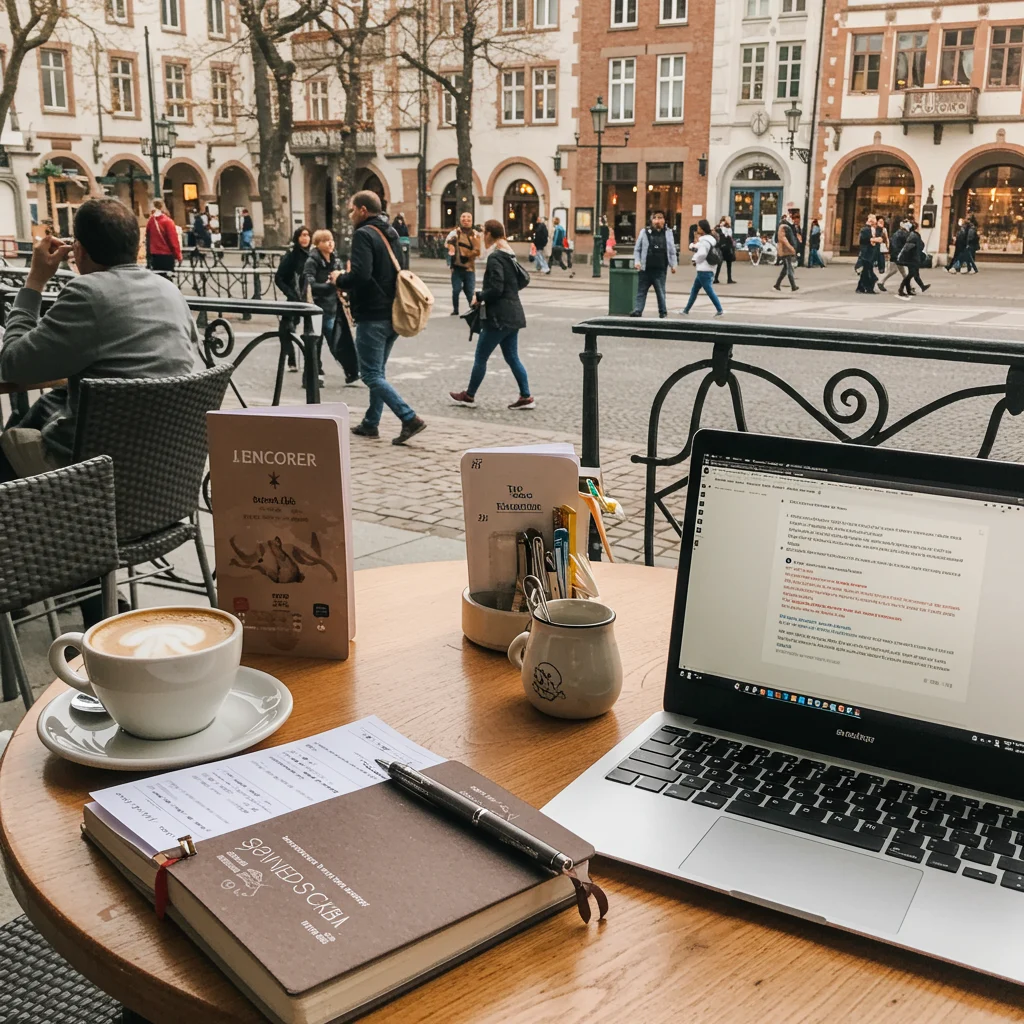
One-Day Circle Oahu Itinerary
- Morning: Honolulu, Diamond Head, Hanauma Bay
- Midday: Kailua, Lanikai, Byodo-In Temple
- Afternoon: Kualoa Ranch, North Shore beaches, Haleiwa
- Evening: Dole Plantation, return to Honolulu
Early starts and brief stops are key for fitting the highlights into one day.
Two-Day Circle Oahu Itinerary
- Day 1: Southern and eastern Oahu, including snorkeling and cultural sites
- Day 2: North Shore, Waimea Valley, Dole Plantation, and shopping
This approach allows more time for swimming, hiking, and savoring local cuisine.
Circle Oahu with a Focus on Nature
Nature lovers may prioritize hiking at Makapu’u, snorkeling at Shark’s Cove, and birdwatching at Ka‘ena Point. Consider packing binoculars and a field guide for native Hawaiian plants and birds.
Circle Oahu for Food Lovers
Food-focused travelers will relish stops at Kahuku shrimp trucks, Haleiwa’s poke bowls, and treats at the Dole Plantation. Sampling fresh tropical fruit and local plate lunches adds a delicious dimension to the journey.
Frequently Asked Questions About Circle Oahu Tours
Many visitors share similar questions when planning their Circle Oahu adventure. Here are concise answers to the most common topics.
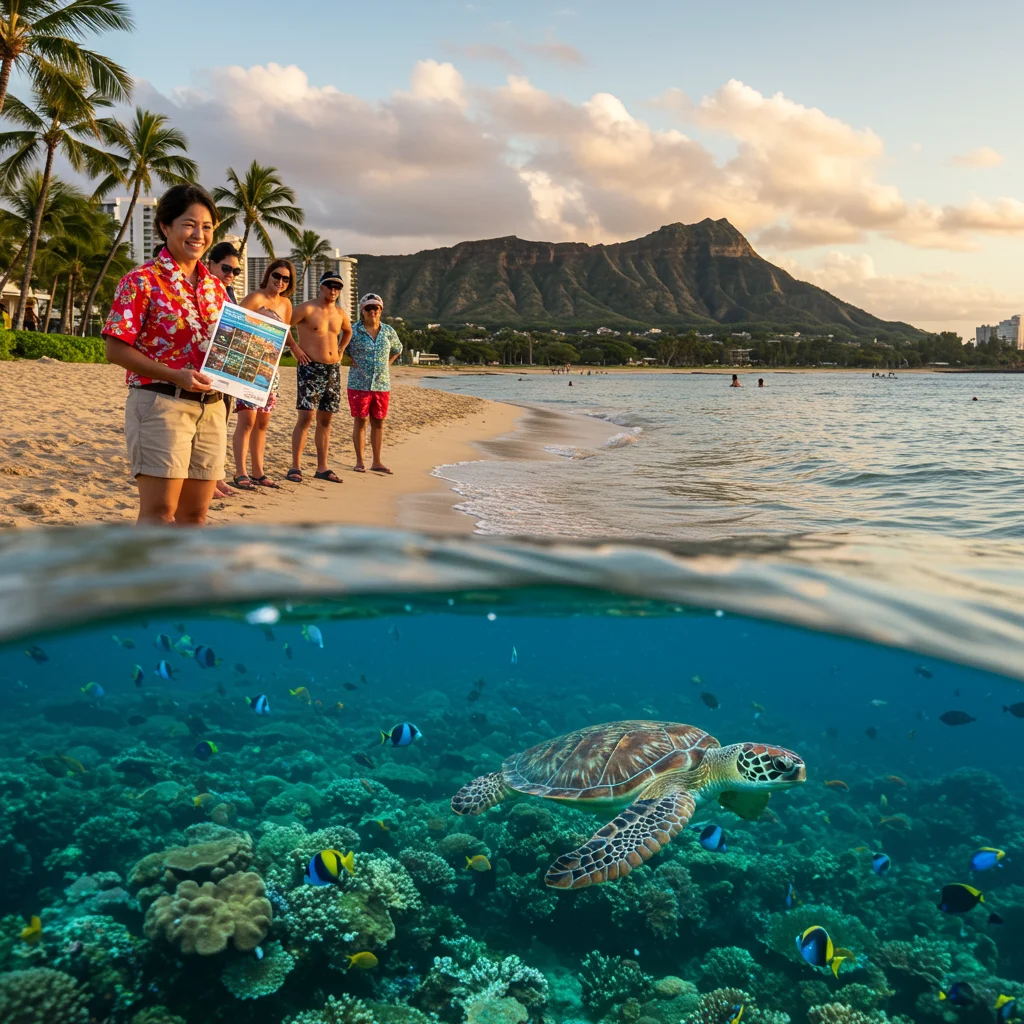
Is the Circle Oahu Tour Worth It?
Absolutely. The Circle Oahu tour offers a comprehensive introduction to the island’s landscapes, culture, and cuisine. It’s a time-efficient way to experience highlights and hidden gems alike.
Can You Do Circle Oahu by Public Transport?
While public buses serve many areas, completing the full loop on transit can be time-consuming and may not reach all key stops. Renting a car or joining a guided tour is typically more convenient.
What Should You Wear on a Circle Oahu Tour?
Opt for lightweight, breathable clothing, comfortable shoes, and a hat or sunglasses. Swimwear is recommended for beach stops, and a light jacket is handy for cooler lookout points.
Are There Restrooms Along the Route?
Yes, most major attractions and beach parks offer restroom facilities. However, some rural areas may have limited amenities, so plan ahead and make use of facilities at larger stops.
Final Tips for the Ultimate Circle Oahu Experience
Creating lasting memories on Circle Oahu requires attention to both enjoyment and responsibility. Respecting local customs, wildlife, and the environment ensures a positive experience for all.
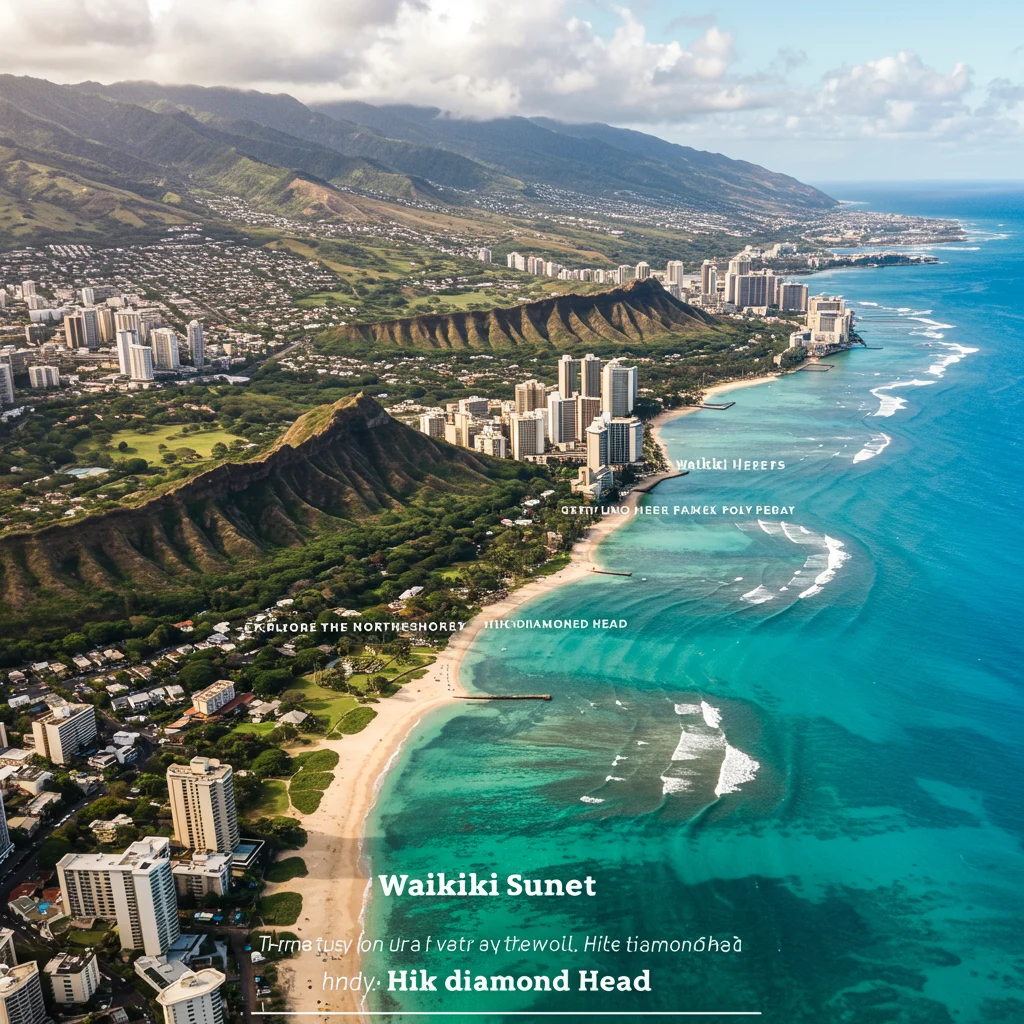
Sustainable & Responsible Tourism on Oahu
We recommend supporting local businesses, minimizing waste, and choosing tour operators committed to sustainable practices. Every mindful decision helps preserve Oahu’s beauty for future generations.
Leave No Trace: Caring for Oahu’s Natural Beauty
Pack out all trash, avoid disturbing wildlife, and stay on designated trails. As experts often say:
“Take only memories, leave only footprints.”
This simple principle guides us to enjoy Oahu’s wonders while protecting its fragile ecosystems.
How to Book on Viator
Booking your Circle Oahu experience is simple with Viator. Their platform allows you to compare tour operators, read verified reviews, and secure your spot in advance. Whether you prefer a small-group adventure, a private tour, or a family-friendly excursion, you can find tours tailored to your interests and schedule.
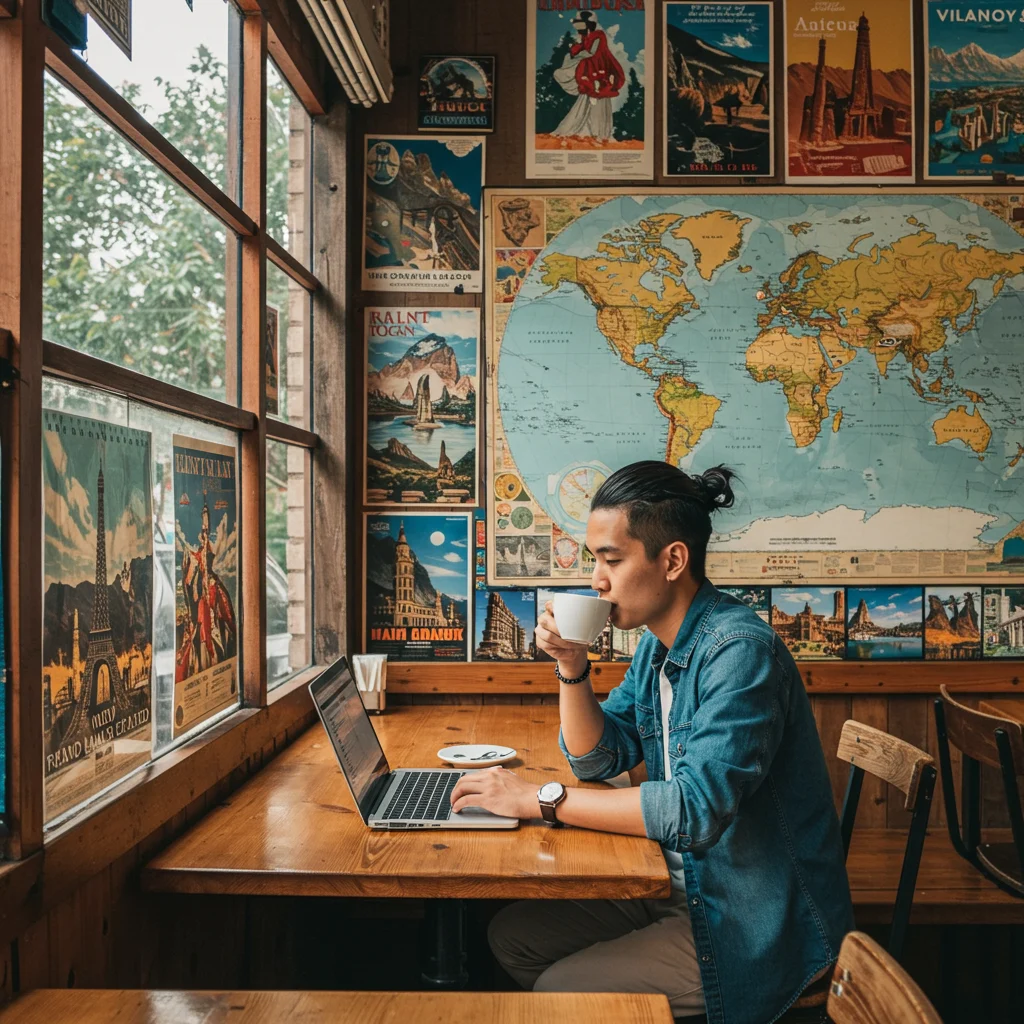
Viator’s booking process is straightforward: select your preferred date, review inclusions, and confirm with secure payment. You’ll receive instant confirmation and detailed instructions for meeting your guide or starting your self-guided journey.
Conclusion: Why Circle Oahu Should Top Your Hawaii Bucket List
A Circle Oahu tour weaves together the island’s natural splendor, rich history, and vibrant local culture into a single, unforgettable day. The ever-changing scenery, from volcanic cliffs to emerald valleys and golden beaches, creates a sense of wonder and connection that few experiences can match. Whether you’re seeking adventure, relaxation, or a deeper understanding of Hawaii, this journey delivers on every level.
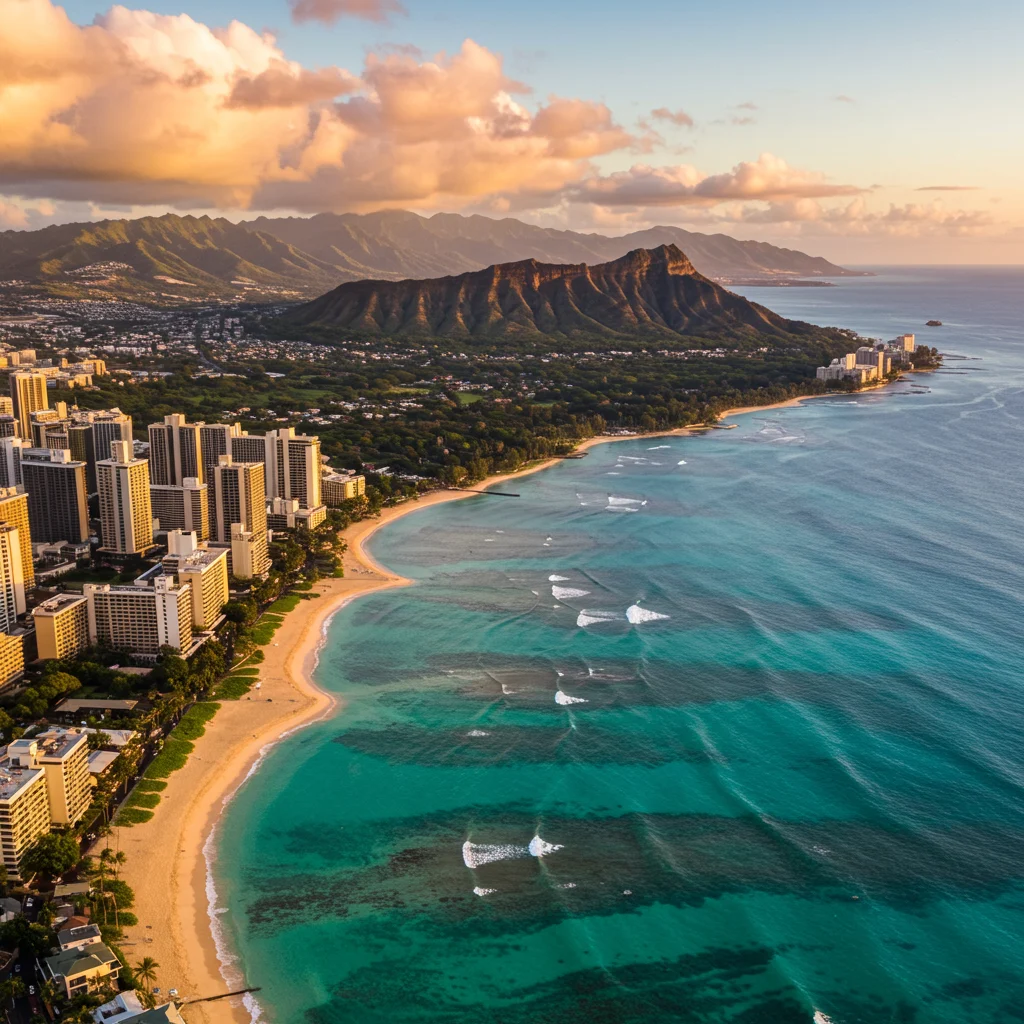
At Izase, we believe every traveler deserves the chance to feel the magic of Oahu’s circle route. For more inspiration and resources, visit Izase and begin planning the adventure of a lifetime.
Disclaimer: This information is accurate to the best of our knowledge; however, there may be changes or mistakes. Please verify exact details on the Viator booking page.


